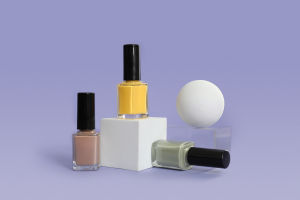The "Pink City" of India, Jaipur, is well-known throughout the world for its gemstones and fine jewelry-making customs.
The city is a thriving center for traditional jewelers and talented craftspeople who use a range of precious and semi-precious stones to make stunning items.
Dear Lykkers, Jaipur is a popular destination for jewelry and gemstone enthusiasts from all over the world because of its gemstone and jewelry business, which blends centuries-old methods with modern craftsmanship.
History and Craftsmanship of Jaipur Jewelry
Jaipur's jewelry-making tradition dates back to the Mughal era when artisans were invited to create elaborate pieces for royal patrons. The city became a central location for the cutting and polishing of gemstones, with craftsmen developing specialized skills that have been passed down through generations.
The influence of the Mughals is still evident in the intricate designs and settings seen in Jaipur's jewelry, which often incorporate floral and geometric patterns, vibrant colors, and exceptional stonework.
The Types of Gemstones Available
Jaipur is home to a wide variety of gemstones, including:
Emeralds - Jaipur is particularly known for its emeralds, which are sourced from countries like Colombia and Zambia. These stones are prized for their vibrant green hues and are often cut and polished to perfection in Jaipur's skilled workshops.
Rubies and Sapphires - Ruby and sapphire are other popular choices in Jaipur, with artisans crafting these gems into elegant, luxurious jewelry. Rubies' rich red tones and sapphires' diverse color spectrum add to the city's diverse gemstone palette.
Opals, Amethysts, and Tourmalines - These semi-precious stones are also widely used in Jaipur jewelry. Known for their unique color play, opals are a favorite for statement pieces, while amethysts and tourmalines add a range of purple and pink shades to intricate jewelry designs.
Jewelry Styles of Jaipur
Kundan Jewelry - Kundan jewelry, a signature style from Jaipur, uses uncut gems set in gold with intricate detailing. This type of jewelry is often elaborate and traditionally used in bridal pieces. The craftsmanship involves layering gemstones with gold foil in a technique that originated in Rajasthan.
Meenakari Jewelry - Jaipur is also renowned for Meenakari, or enamel work, which adds colorful detailing to jewelry. This process involves fusing colored enamels onto metal surfaces to create vivid patterns. The technique was introduced by the Mughals and is used alongside gemstones to enhance the aesthetic appeal of a piece.
Thewa Jewelry - Unique to Rajasthan, Thewa is a special art form that combines gold with glass. Jaipur artisans create intricate patterns on gold sheets, which are then fused onto colored glass, resulting in delicate, translucent jewelry that reflects the light beautifully.
Shopping for Gemstones and Jewelry in Jaipur
Jaipur's vibrant bazaars, such as Johari Bazaar, specialize in gemstones and jewelry and are a must-visit for buyers seeking authenticity. These markets are filled with skilled artisans and shopkeepers offering handcrafted pieces. For a more curated experience, jewelry stores across the city offer a selection of designer and custom pieces, where buyers can witness artisans at work and even request custom designs.
Economic and Cultural Significance
The gemstone and jewelry industry is a vital contributor to Jaipur's economy. It provides employment to thousands of skilled artisans, craftsmen, and traders. Jaipur's gemstone exports are significant, with clients worldwide seeking the quality and craftsmanship the city is known for.
Additionally, the jewelry-making traditions of Jaipur are not just about commerce—they are a part of India's cultural heritage, preserving ancient artistry and passing it down through generations.
The artistry of Jaipur's jewelry and gemstones is a stunning fusion of artisanal talent and cultural tradition. The jewelers in the city have created items that appeal to both traditionalists and modern jewelry enthusiasts by skillfully preserving traditional processes while incorporating current aesthetics.
Without visiting Jaipur's bustling jewelry marketplaces, where the craftsmanship, passion, and tradition of Indian jewelry-making are on full show, a visit would not be complete.


